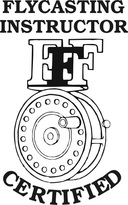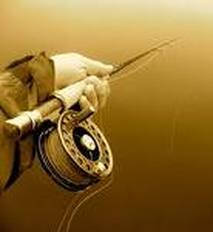Quality Fly Casting Instruction

Need a bit of help with your casting? Would you like to cast farther with tighter loops and greater accuracy?
As a Federation of Fly Fishers Certified Casting Instructor, I would be happy to assist you in developing, improving, or fine-tuning your casting skills.
Let's work on your casting together to make the upcoming fishing season as enjoyable and productive as possible!
Bill and Jay Gammel's Five Essentials of Fly Casting...

1. Slack line should be kept to a minimum.
2. There is a pause at the end of each stroke, which varies in duration with the amount of line beyond the rod tip.
3. The rod tip must follow a straight line path.
4. Power must be applied in the proper amount and in the proper place during the stroke.
5. Casting stroke is increased with the length of line being cast.
.
Remember that slack cannot bend - or load - a fly rod. Always start your cast in the 'rod down' position with the line straight.
The rod must be stopped crisply at the end of each casting stroke in order for the line to unroll and straighten before power is applied in the opposite direction. The length of the pause between casting strokes varies in duration according to how much line is beyond the tip of the rod. Long line, long pause...short line, short pause.
In order to cast the most efficient, least wind resistant loops, the caster must move the rod tip in a straight line path (SLP). The further the rod tip deviates - or drops - below the straight line path, the wider the loops.
Power is applied smoothy and progressively throughout the casting stroke. Each casting stroke begins slowly, then increases in speed to an abrupt stop. Most of the rod's acceleration occurs during the last half of the stroke.
Arc is defined as the angle change between where the rod top stops on the backcast and where it stops on the forward cast (or vice versa). Stroke is the distance the hand moves throughout the casting stroke. In order to cast 15 feet of fly line (using the face of a clock as a reference), the rod tip might only need to travel from 11:00 to 1:00 in order to throw a desired 'tight' loop. Casting increasingly more fly line will require that this arc be expanded to 10 o'clock and 2 o'clock...or beyond. Long line, long stroke...short line, short stroke.
